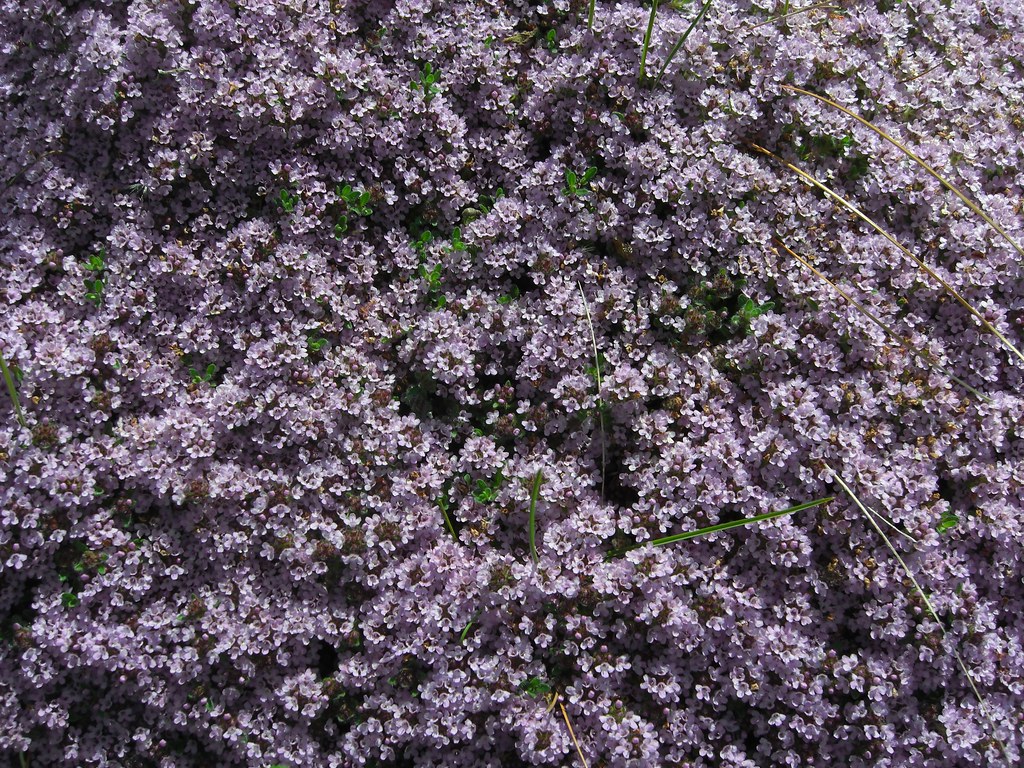Creeping Thyme, also known as Thymus serpyllum, is a delightful, low-growing herbaceous plant that is both fragrant and beautiful. It is part of the mint family and offers a subtle lemon scent. With its lush, green leaves and delicate, pink to purple flowers, it’s a popular choice in rock gardens, pathways, and as a lawn substitute.
Not only does Creeping Thyme add charm to the garden, but it’s also a useful culinary herb. It’s widely used in cooking, particularly in European cuisines, where it adds a unique flavor to dishes. Moreover, Creeping Thyme serves a dual purpose as an ornamental ground cover that attracts pollinators, and also as an essential herb for the kitchen.
The popularity of Creeping Thyme is due to its low-maintenance nature, robustness, and aesthetic appeal. Its versatile characteristics make it suitable for various garden types, including rock gardens, herb gardens, or even as an aromatic addition to a patio.
| Attribute | Details |
|---|---|
| Common Names | Creeping Thyme, Mother of Thyme |
| Botanical Name | Thymus serpyllum |
| Family | Lamiaceae |
| Plant Type | Perennial Herb |
| Mature Size | 3-6 inches tall, 12-18 inches wide |
| Sun Exposure | Full Sun |
| Soil Type | Well-Drained, Sandy Soil |
| Hardiness Zones | 4-9 |
| Native Area | Europe |
Creeping Thyme Care
Creeping Thyme is a robust and versatile plant that requires minimal care. It’s drought-tolerant, deer-resistant, and thrives in various soil types, provided that they are well-drained.
Watering should be done sparingly, especially once the plant has been established, as it prefers drier conditions. Regular pruning isn’t necessary but can promote denser growth and more flowers. It can be trimmed lightly after flowering to keep it tidy.
Light Requirement for Creeping Thyme
Creeping Thyme needs full sun to grow at its best. It will tolerate light shade, but this may result in less vigorous growth and fewer flowers.
Soil Requirements for Creeping Thyme
Creeping Thyme thrives in well-drained soil. Sandy or gravelly soils are preferred, and it can even thrive in rocky or poor soil. Overly rich or heavy, clay-like soils should be avoided.
Water Requirements for Creeping Thyme
While it is important to water Creeping Thyme during its initial growth phase, it is a drought-tolerant plant once established. Excessive watering or poor drainage can lead to root rot.
Temperature and Humidity
Creeping Thyme is hardy and can withstand various temperature conditions within its hardiness zones. It prefers dry climates and is not sensitive to humidity levels.
Fertilizer
Creeping Thyme typically does not require fertilizing. If growth seems sluggish, an all-purpose, balanced fertilizer can be applied in the early spring.
Pruning Creeping Thyme
Pruning is not generally required but can be done to shape the plant or encourage denser growth. Trim lightly after flowering.
Propagating Creeping Thyme
Creeping Thyme can be propagated through division, stem cuttings, or seeds. Divide in the spring or fall, or take stem cuttings during the growing season.
How To Grow Creeping Thyme From Seed
Sow Creeping Thyme seeds indoors 6-8 weeks before the last frost or directly outdoors in the spring or fall. They should be lightly covered with soil and kept moist until germination.
Common Pests & Plant Diseases
Aphids
Aphids may occasionally be a problem but can usually be controlled with insecticidal soap.
Root Rot
This can occur in overly wet soil or poor drainage conditions.
Common Problems With Creeping Thyme
Spindly Growth
This often results from insufficient light. Ensure that the plant receives enough sunlight.
Yellowing Leaves
Overwatering or poor drainage can lead to yellowing leaves.
Pro Tips
- Plant in full sun for best growth and flowering.
- Ensure well-drained soil, especially if planting in a container.
- Water sparingly once established to prevent root rot.
- Consider planting near walkways or patios to enjoy the fragrance when stepped on.
- Utilize as both a culinary herb and a decorative ground cover.
- Consider mixing varieties for a multi-colored carpet effect.




